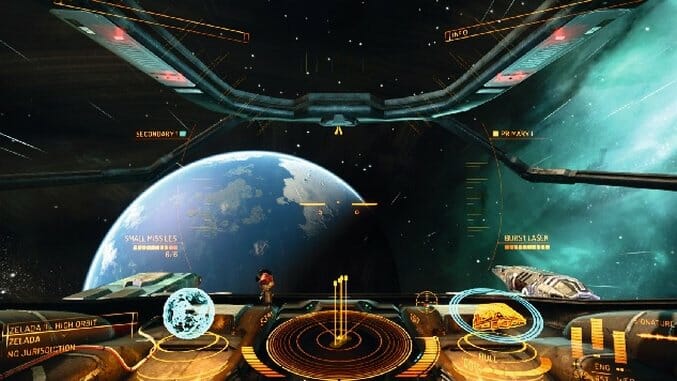Winning the Space Race: The Future of Elite Dangerous

When it launched, Elite Dangerous was on the forefront of the space sim renaissance, revitalizing a genre whose popularity flagged steadily through the aughts and looked like a dead proposition only a few years ago. But a handful of games have recently proven that there’s an appetite for deep space-combat simulations, and Elite succeeded by focusing on the hardcore crowd that has been waiting for another turn at the sticks since the late ‘90s. It’s a big, ambitious, clockwork sandbox, and most of its systems work well independently. The problem, though, is that they often don’t work well together, and don’t really seem designed to.
Elite is like a beautiful scaffold behind which a building has yet to be constructed. The first few hours are breathtaking and immersive, with everything from intricate landing procedures to individual starship modules rendered in loving detail against vast, gorgeous expanses of the Milky Way. It seems rich with possibility, whether you want to hunt pirates, mine asteroids, trade commodities, or fight in service of a systems-spanning empire.
But when the novelty wears off, all these systems (both the mechanical ones and Elite‘s staggering 400 billion star systems themselves) feel empty. There’s no connective tissue, and not enough of a carrot to keep players engaged in what turns out to be a slow grind towards a limited set of rewards. Upgrading your ship represents the only real progression in the game, and once you’re in a ship you like and you’ve outfitted it to match your play style there is precious little left to strive for—no campaign or narrative, a faction system that feels like it’s built on numbers and bars rather than personalities and ideologies, no pilot progression, and no option to carve out a corner of the galaxy for yourself or build your own home amongst the stars.
The virtual reality angle provides a nice lift, but it’s not enough. Now that some of the initial novelty has worn off, headset owners are looking for VR experiences with some staying power, and Elite Dangerous’s depth would presumably provide that. But VR is still very niche and, as a purchase motivator, only applies to a limited audience.
Don’t get me wrong, Elite hasn’t been left to wither on the vine. With last month’s release of the Engineers expansion, part of their Horizons initiative, the developers at Frontier have added a suite of new content that includes an updated missions system, crafting, and loot. And alongside features like landing on planets and driving around in space buggies, future updates promise things like multiple players on-board the same ship, huge player-controlled capital ships, and boarding hostile vessels.